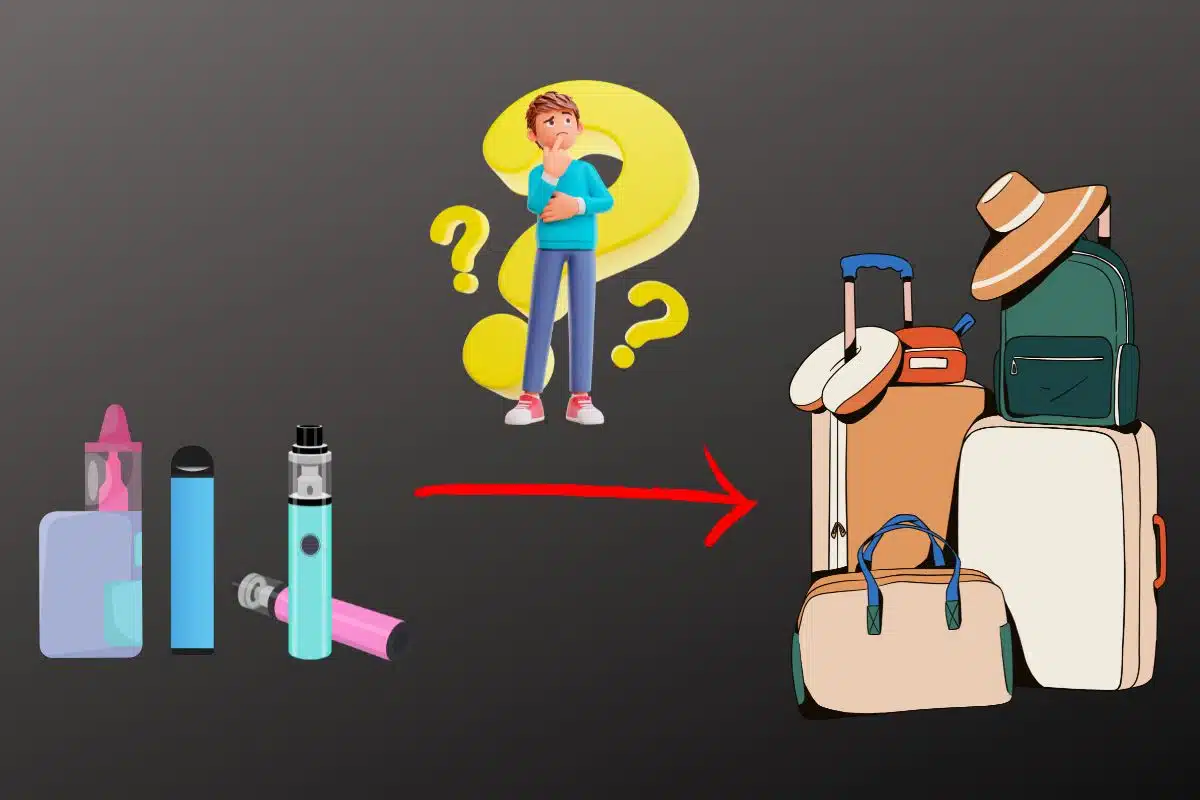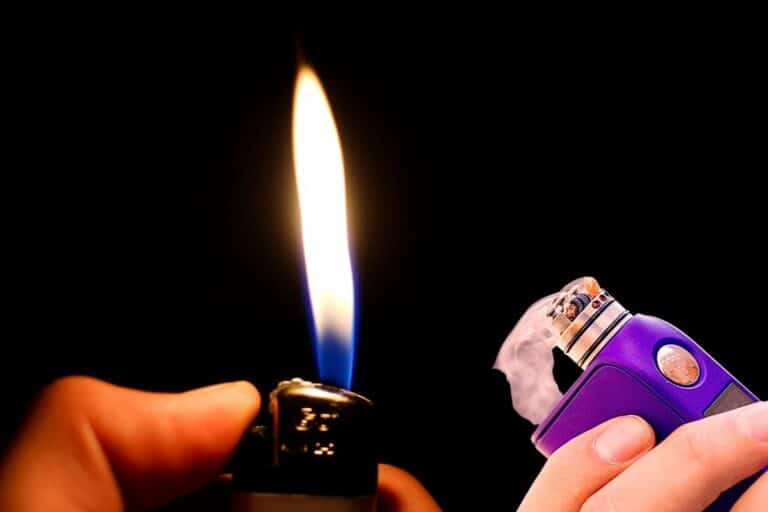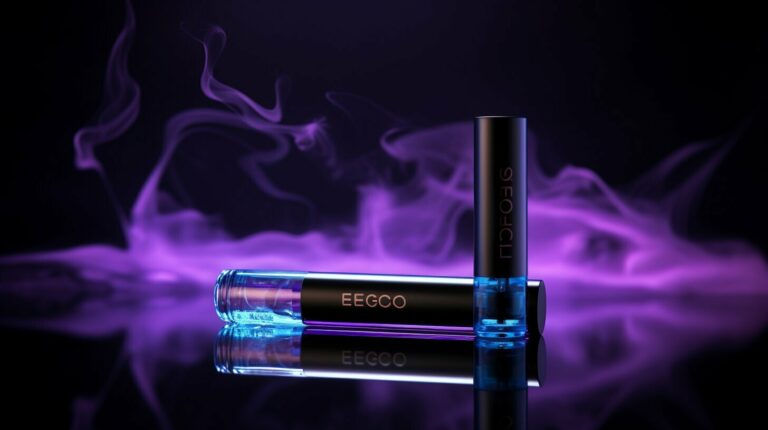Can You Bring a Weed Cart on a Plane? Essential Guidelines Explained
The vaping culture is in full swing, and it’s therefore not surprising that people wish to carry their vapes around — including on plane to various destinations. And of course, this comes with the risk of skirting the law, which you would be wise to avoid. So if you’re planning to fly with a vape, you must learn the rules to follow to avoid being in legal hot water.
This body of laws includes the TSA’s (Transport Security Administration of the United States) protocols and policies. Airline regulations are also worth considering. In any case, complying with these policies is vital to ensure a smooth airport security check process.
In this article, we’ll go over these laws, exploring how you can carry carts on a plane. Keep reading to learn all you need to know for a hitch-free journey:
Understanding TSA Guidelines for Vape Cartridges

Flying with empty vape pens or dry herb vaporizers is not likely to raise eyebrows in most cases (as long as they do not contain cannabis.) According to the TSA (Transport Security Administration of the United States), passengers can carry vaping cartridges and other products on a plane. However, there are some strict and well-defined requirements to comply with.
For instance, they can only carry these items in their carry-on bag or pocket — not in their checked luggage. This is due to the batteries inside. Lithium-ion batteries can be especially risky when stored where no one can keep an eye on them.
TSA Rules for E-Cigarettes and Vapes
Battery safety guidelines and restrictions: As we’ve hinted above, when it comes to batteries, there are size limits. Vapes with a lithium-ion battery are usually stronger than 100 watt-hours (Wh). In the case of Lithium metal batteries, the rule says that they cannot have more than 2 grams of lithium, and passengers are not allowed to vape on the plane.
You are also required to ensure that your vape device is properly turned off. Some devicescan accidentaly activate when the button is pressed inside the luggage, potentially causing overheating mid-flight. You can do this by simply removing the battery to prevent your vape device or e-cigarette from activating by accident.
Quantity restrictions: Travel packing also comes with some restrictions on quantity. Your vaping devices, whether sleek pod systems or bulky mods, must all be put in your carry-on bags. Typically, some users bring along some extra vape juice. The 3-1-1 rule for liquids comes to mind here: every bottle must be about 3.4 ounces (100 ml) or smaller, each bottle must fit into a single quart-sized bag, and each passenger is only allowed one bag.
The same rule applies to other liquids, like shampoo and toothpaste, so you can just toss your e-liquid in with your toiletries.
Content restrictions: You must also consider what’s in your vaping cart before air travel. Where your container (whether vape or e-cigarette) contains any cannabis residue, you may have to go through additional screening. While Nicotine and CBD products are allowed in most countries, there tend to be strict regulations on THC products — especially THC vape cartridges.
To avoid breaking the law, one must always check to know that any item you’re taking onboard the plane and to your destination is allowed. As in each case, the final decision ultimately rests with the TSA agent.
Airport Security Policies for Vape Devices

Airports in the US and around the world have their security policies for vape devices. Let’s reel out some of them below:
Strict checked baggage prohibition
In essence, the FAA and TSA regulations prohibit all electronic vaping devices (and that includes mods, pens, and spare lithium-ion batteries,) from checked luggage. The reason for this is simple: these batteries can pose a serious fire hazard if the pressurized cargo hold causes a thermal runway incident that may escalate in a manner beyond their control. This rule is strictly enforced such that if they detect your device during screening, the baggage handlers will remove it, which may potentially leave you grounded or require you to give up the item.
Mandatory Carry-On Protocol
According to the rules, all vapes must be packed in your carry-on or personal item. This policy is also strictly enforced, as TSA agents are well-trained to flag vaping equipment during X-ray screenings. To help you make a more streamlined inspection, you want to store devices in an easily accessible pouch.
Navigating Airport Security with Vape Devices
Even when you meet the carry-on requirements, some airlines may still require secondary checks at the gate for bigger vaping devices. If you have bulky mods, they can still be treated like other restricted electronics such as laptops. If asked about it, make sure to comply promptly, as arguing could lead to confiscation.
Documentation for CBD/THC Cartridges
If you’re flying with cannabis-derived vape cartridges, the priority should be safely, not legality as such. However, you must keep in mind that agents can escalate suspicious THC products to local law enforcement. To mitigate risks, there are some ways to stay in line with the law:
- When carrying any CBD products, take the lab reports or Certificate of Analysis (COA) with you;
- If you are unsure about the laws of your destination state, avoid making interstate travels with THC cartridges; and
- Consider carrying more discreet disposable or low-profile devices to avoid attention.
International travels
If traveling internationally, note that many countries (such as Singapore and Japan) impose severe penalties for vaping devices, regardless of their content. This is where your research comes in — you’re likely to find out that some destinations confiscate hardware outright, while others treat nicotine vapes as contraband.
Ultimately, being proactive can prevent problems. As long as you pack smart, know the rules, and are prepared for the little inconvenience of extra screening, you shouldn’t have any problems.
Carry-On vs. Checked Luggage: What You Need to Know

Before traveling, adequate preparation of your luggage will help you make your travel experience smoother. So, let’s break down what needs to stay with you and what should stay behind:
Carry-On Luggage
- Vape Devices & Batteries: FAA (The Federal Aviation Administration — the U.S. government agency responsible for regulating and overseeing civil aviation in the United States) requires that all vape devices and lithium batteries are stored in carry-on bags, toiletry kits, or your pocket. But never in your checked-in luggage. This is to reduce the risk of a fire outbreak in the cargo hold due to the changes in temperature and atmospheric pressure.
- Liquids & Pods: Your actual device can stay with you, but spare e-liquid bottles should be packed in checked baggage, once they follow the TSA’s guidelines (remember the 3-1-1 rule?)
- Security screening: You want to keep your vape within reach, as the TSA may need you to remove it from your bag during screening. Ideally, you want to store it in an outer pocket or a dedicated pouch to help you breeze through checkpoints without fumbling.
Checked Luggage
- Ban on batteries & devices: Prohibited items in checked baggage also include lithium batteries. This is due to their potential thermal runway risk. Even if the device is off, the FAA’s stance on this does not change, as it’s all about your in-flight safety.
- Mistakes: Making certain mistakes, like accidentally packing your vape in your checked luggage can cause delays, confiscation, or even a missed flight if you’re not in a position to reclaim it. This is why you should play it safe: Make sure to double-check your carry-on before you drop your checked bags.
- Creative alternatives for bulk times: if you’re taking extra coils, vape accessories, or other non-battery devices with you, you can put them in your checked luggage. But make sure to isolate them in a sealed case to prevent damage. When in doubt, carry it on. It’s better to be over-prepared than held down.
Flying with CBD, THC, and Other Cannabinoid Carts

Generally speaking, the laws on cannabinoid vape cartridges, whether as a CBD, THC, or other hemp-derived compound, may drastically vary depending on local and federal laws of where you are located or your destination.
While hemp-derived CBD products contain less than 0.3% Delta-9 THC are legal (on a federal level per the 2018 Farm Bill), some airlines and state laws may impose their own restrictions. Conversely, THC-dominant carts (exceeding 0.3% Delta-9 THC) are federally illegal, which places them under strict TSA and airline prohibitions.
Before packing any Cannabinoid vapes, you must consider these factors. Also remember, the TSA is more focused on security than on drug enforcement, which is the job of the FDA (Food & Drug Administration). This means the TSA may or may not search you. However, if they do, and when they find something, there would be legal consequences which may range from confiscation to fines or other legal punitive measures.
Another thing to note is that most major airlines follow federal guidelines. Some however expressly ban all vaping devices in checked luggage due to risks commonly associated with lithium batteries which require them in carry-ons instead. Others place an outright ban on cannabis-related products. So we recommend that you always check your airline’s policy 48 hours before your flight to know exactly what the law says.
Some countries have a zero-tolerance policy when it comes to flying with cannabinoid products, and impose heavy fines or imprisonment for cannabis-related offenses regardless of their THC content.
To sum it up, if you’re in doubt about anything, then it’s best to leave it out. The convenience of traveling with a vape cart isn’t worth you courting legal trouble. So plan ahead and prioritize being on the right side of the law.
International Flight Considerations
Air travel regulations for vape devices on international flights
Before packing your vape, we recommend that you research your destination’s laws. Some countries place an outright ban on vaping, while others place strict penalties for cannabis-related products, regardless of whether they are CBD or hemp-derived.
Besides the TSA rules, airlines also enforce their own policies. To illustrate, a certain carrier may ban vapes in checked luggage, but others will ban cannabis altogether — even in a country/state where it is legal.
Packing and Safety Precautions
Batteries and other non-battery devices Remember that lithium batteries are not allowed in check bags. So, always make sure to pack your mods, vape pens, and spare batteries in your carry-on, since the TSA mandates this for your safety.
Accidental activation is another thing to consider, and you can solve this by simply turning off your device. If removable, detach your battery. Use a protective case to prevent changes in atmospheric pressure to cause leaks mid-flight.
As an extra precaution, you can also place carts or pods in a sealed plastic bag to trap any potential residue.
Airline-Specific Rules for Flying with Vapes
When it comes to flying with vapes, the bottom line is this: Know your airline’s policy. Certain budget airlines (e.g., Ryanair, Spirit) have stricter rules to follow while full-service carriers (such as Delta, or Emirates) may not only allow devices but prohibit use onboard. So, you always want to check their website or call customer service to confirm.
The fact that you are flying between two regions where cannabis use is legal (for instance, from Canada to California, since airlines follow federal laws, your THC vape could still be confiscated.
Consequences of Non-Compliance
What happens when your vape is confiscated? Well, since the TSA is more concerned about your security and not the enforcement of the drug law, they may hand you over to local law enforcement, especially when the destination country prohibits the use of cannabis products.
Regions like the UAE and Singapore are known to penalize users heavily with jail time or fines. In places like Europe, you may simply have the device seized.
If unsure, you should ship devices ahead through a compliant courier, or buy disposables when you arrive at your destination.
Tips for Traveling with Vape Carts
Traveling with vape carts? You need two things: the right documentation and awareness. As you may be questioned at Customs, your CBD products should carry a COA (Certificate of Analysis) showing that THC content is <0.3% in line with the Farm Bill of 2008.
Also, check in with the legality of vaping liquids. Certain countries’ laws such as Japan permit CBD but place a ban on all vaping liquid. Others permit cannabis but restrict imports. Here are some more safety tips to follow:
- Ensure to charge your devices before security, since some airports prohibit charging stations;
- Empty your tanks before the flight to avoid leaks from cabin pressure changes; and
- Download and have airline/TSA policies handy should you need to reference them mid-journey.
FAQs
Can I bring a weed vape pen on a plane?
No, flying with THC vape cartridges or weed is deemed illegal by federal laws.
Can I bring a CBD vape pen on a plane?
Yes, but CBD products containing less than 0.3% THC may not be allowed through the TSA checkpoint.
What happens if TSA finds a weed pen?
A TSA agent may turn you and your products over to airport security (usually local police) if they find a weed pen on you in a jurisdiction where it is illegal.












